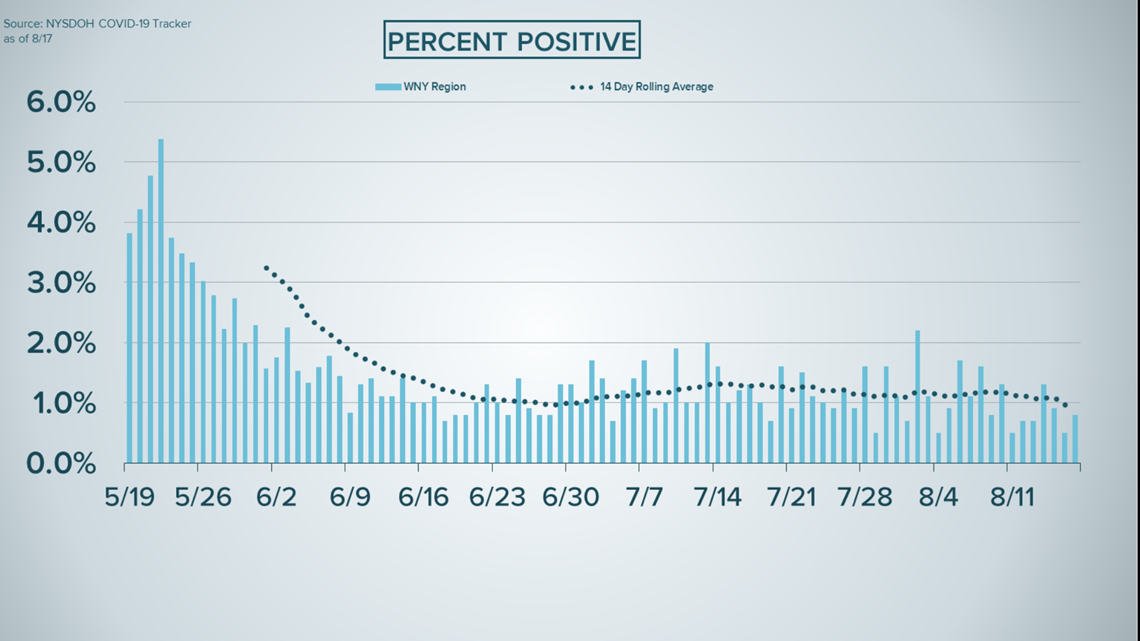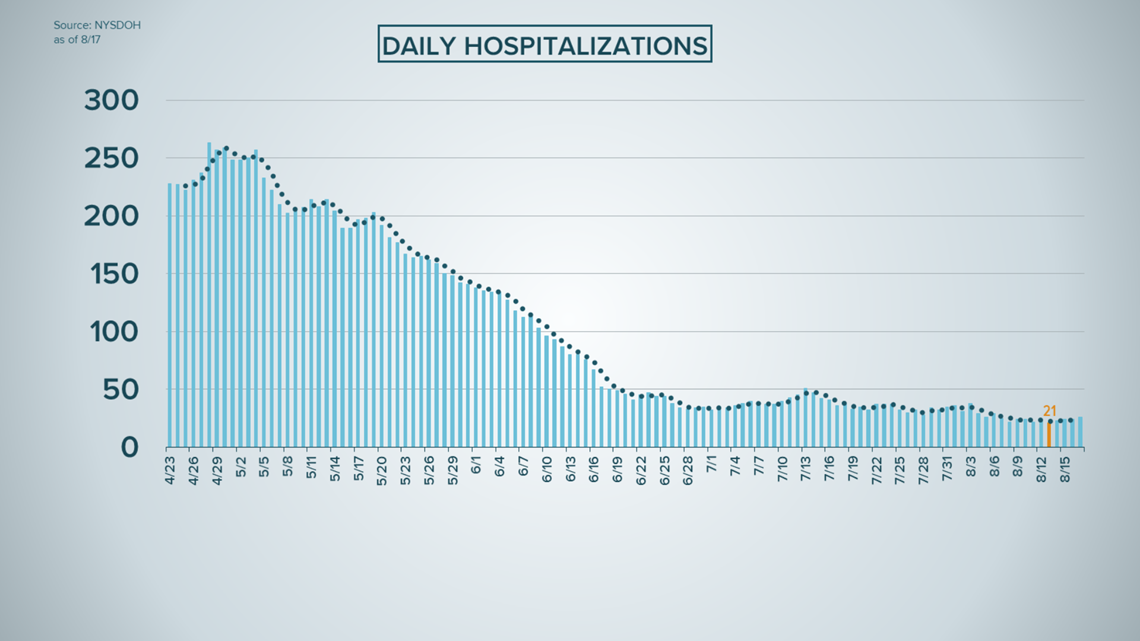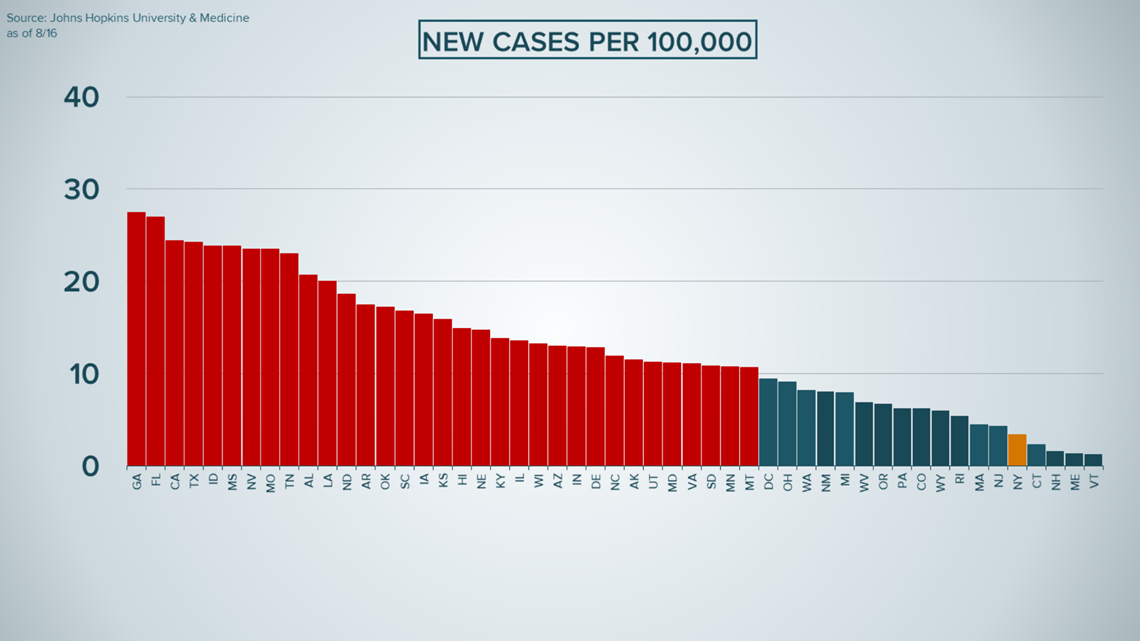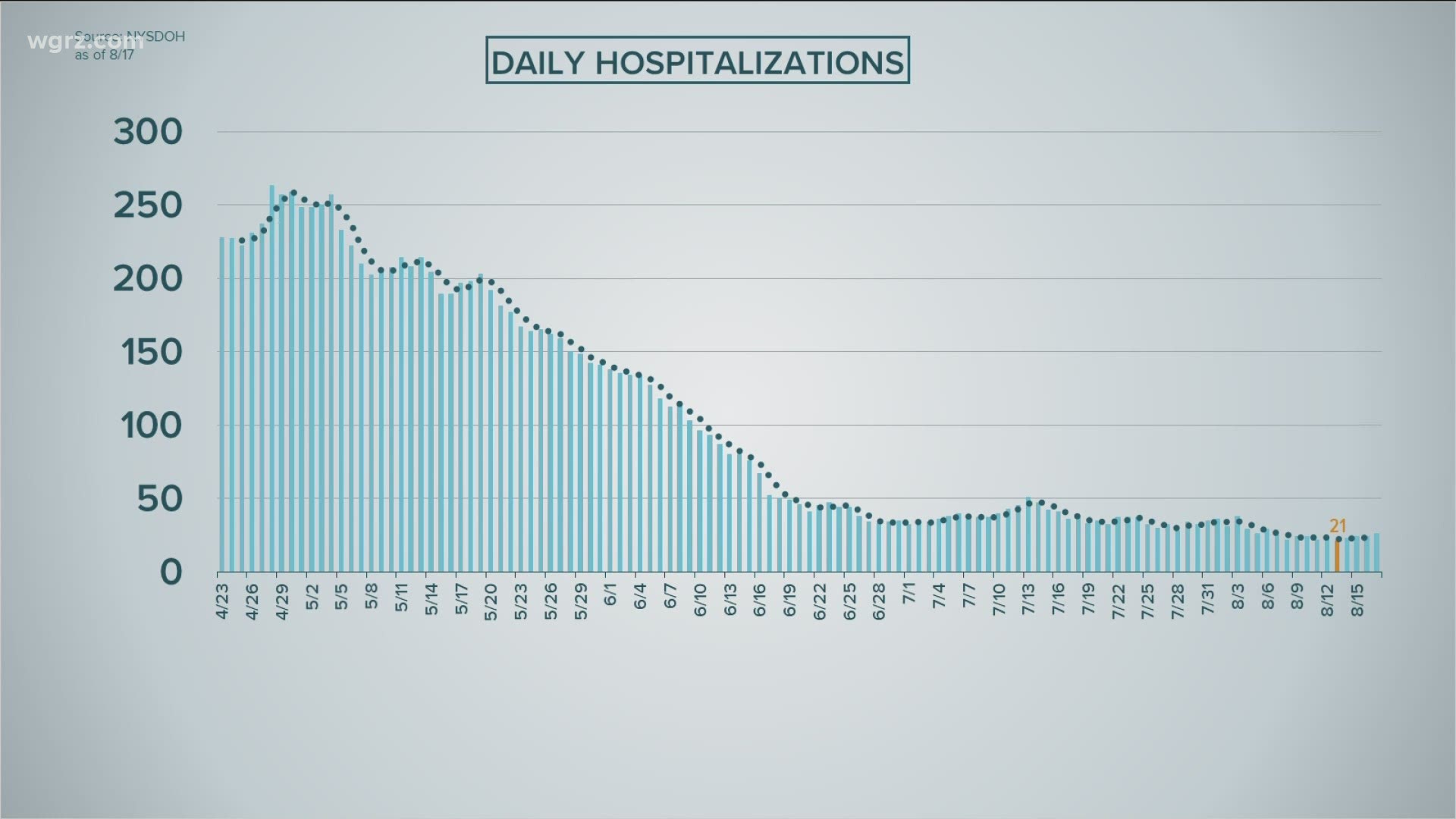BUFFALO, N.Y. — Keeping in line with New York State, the Western New York Region continues to have a COVID-19 percent positive rate below 1%.
The seven-day rolling average of the percent positive in the Western New York Region is now 0.8%. The drop follows several days of the daily percent positive below 1% as well. On Monday, the percent positive for the five county region was 0.8%. Of the 4,832 test results, 40 were positive.


The Western New York Region consists of Erie, Niagara, Chautauqua, Cattaraugus and Allegany counties.
Daily Hospitalizations in the WNY Region remain low. On Monday, August 17, there were 26 Daily hospitalizations. The lowest number recorded since the start of the pandemic was 21 on August 13. The region has been below 30 daily hospitalizations since August 4.


New York State has now gone 11 straight days for having a positive rate below one percent. Nearly 67,000 tests were completed on Monday. Of those tests, 655 were positive, or .98%
It is the 5th best state in the country, currently averaging 3.4 new cases per 100,000 people.


Human coronaviruses are usually spread through...
- The air by coughing or sneezing
- Close personal contact, such as touching or shaking hands
- Touching an object or surface with the virus on it, then touching your mouth, nose or eyes before washing your hands.
Help stop the spread of coronavirus
- Stay home when you are sick.
- Eat and sleep separately from your family members
- Use different utensils and dishes
- Cover your cough or sneeze with your arm, hot your hand.
- If you use a tissue, throw it in the trash.
Lower your risk
- Wash your hands often with soap and water for at least 20 seconds. If soap and water are not available, use an alcohol-based hand sanitizer.
- Avoid touching your eyes, nose, and mouth with unwashed hands.
- Avoid close contact with people who are sick.
- Clean and disinfect frequently touched objects and surfaces.
- If you are 60 or over and have an underlying health condition such as cardiovascular disease, diabetes or respiratory illnesses like asthma or COPD, the World Health Organization advises you to try to avoid crowds or places where you might interact with people who are sick.

